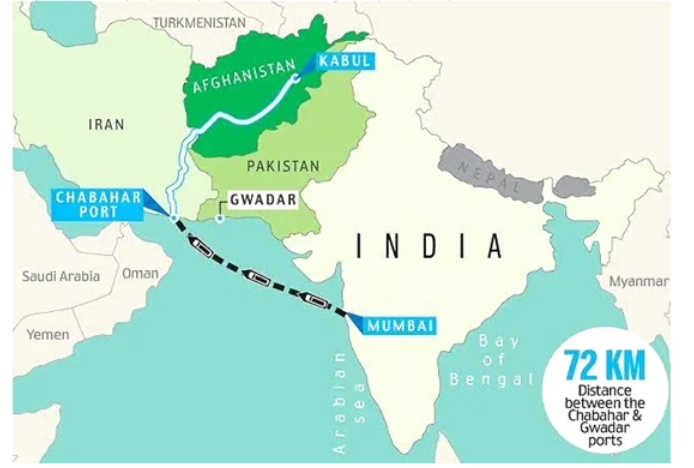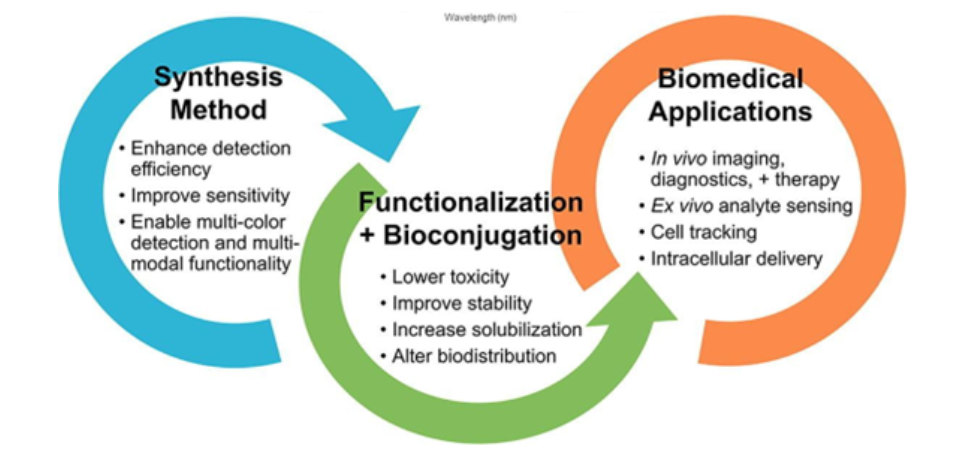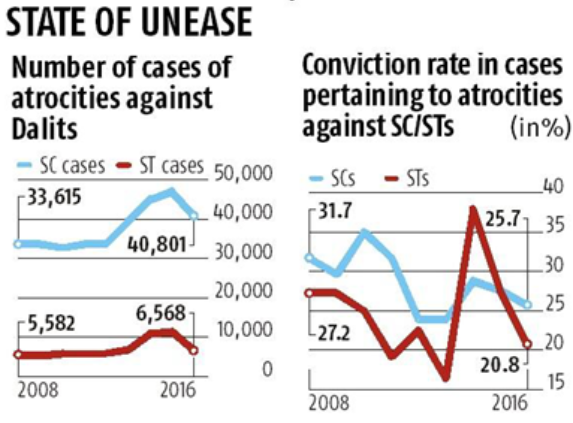Thursday, 12th October 2023
2023 Nobel Prize in Economic Sciences
Why in news? Recently, the Nobel Prize in Economics for 2023 has been awarded to Claudia Goldin, a Harvard University professor, for research that has advanced the understanding of the Gender Gap in the Labor Market.
About:
Claudia Goldin:
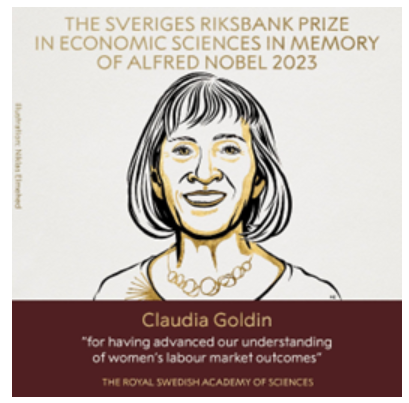
- She is only the third woman to receive this honor since its inception in 1969.
- Claudia’s Work: Goldin has been a pioneer in studying the role of women in the economy and has written several books on the topic, such as Understanding the Gender Gap: An Economic History of American Women (Oxford, 1990), and Career & Family: Women’s Century-Long Journey toward Equity (Princeton University Press, 2021).
Nobel Prize in Economic Sciences
- Nobel Prize in Economics is also known as Sveriges Riksbank Prize in Economic Sciences.
- In 1968, Sveriges Riksbank (Sweden’s central bank) established the Prize in Economic Sciences in Memory of Alfred Nobel.
- Unlike the original Nobel Prizes in fields like physics, chemistry, medicine, literature, and peace, which were established by Nobel's will, the Nobel Prize in Economic Sciences is not one of the original Nobel Prizes.
- The prize was established later to honor outstanding contributions to the field of economics.
- The Prize recognizes individuals or organizations for their exceptional research, discoveries, or contributions that have advanced the understanding of economics and its application to real-world problems.
- The Prize in Economic Sciences is awarded by the Royal Swedish Academy of Sciences, Stockholm, Sweden.
Key Highlights
- Goldin had provided “the first comprehensive account of women’s earnings and labour market participation through the centuries.
- Goldin’s path-breaking work has shed light on the participation of women in the labour market over the past 200 years, and why the pay gap between men and women refuses to close even as many women are likely to be better educated than men in high-income countries.
- Historical Perspective: Before Industrialization, women were more likely to be involved in economic activities related to agriculture and cottage industries.
- However, with the rise of industrialization and factory-based work, women faced difficulties leaving their homes to work.
- Role of the Services Sector: In the early 20th century, the growth of the services sector played a pivotal role in women's access to higher education and employment opportunities.
- This sector offered more opportunities for women to enter the workforce.

- U-shaped curve – The participation of married women decreased with the transition from an agrarian to an industrial society.
- But it then increased with the growth of the service sector.
- Marriage Barriers: By the beginning of the 20th century, while around 20 % of women were gainfully employed, the share of married women was only 5 %.
- Goldin noted that legislation known as “marriage bars” often prevented married women from continuing their employment as teachers or office workers.
- Role of Contraceptive Pills: The availability of easy-to-use contraceptive pills by the end of the 1960s allowed women to exercise greater control over childbirth and plan their careers and motherhood.
- This led to more women studying subjects like law, economics, and medicine and entering various fields of employment.
- Role of Parenthood in Pay Gap: Despite improvements in education and employment opportunities for women, a significant gender-based pay gap persisted.
- Initial earnings differences between men and women were small. However, once the first child arrived, women's earnings fell, and they did not increase at the same rate as men's earnings, even if they had similar education and professions.
More Information:
- 2022 Nobel Prize in Economics was awarded to Ben S. Bernanke, Douglas W. Diamond and Philip H. Dybvig “for research on banks and financial crises.”
Uterus Transplantation - Edukemy Current Affairs
Why in News: Recently, the first Uterus Transplantation of UK was conducted which can be a promising solution for the women facing reproductive problems.
Uterus Transplant:
- It is a medical technique where a woman's damaged or non-existent uterus is replaced with a healthy one.
- It can help women who lack a uterus fulfill their reproductive needs.
- From a living or deceased donor, a replacement uterus is acquired and placed into the recipient.
- At Galaxy Care Hospital in Pune, India's first uterus transplant baby was born by a C-section in 2018.
- According to the British Medical Bulletin, uterine factor infertility affects about 1 in 500 women.
Procedure of Uterus Transplant:
- Before the transplant, the patient is subjected to extensive physical and mental health examinations. The viability of the donor's uterus is carefully evaluated, whether it comes from a living or deceased donor.
- The Uterus Transplant procedure doesn’t connect the uterus to the fallopian tubes – which ensure the ovum from the ovaries moves to the uterus – so the individual can’t become pregnant through natural means.
- Instead, doctors remove the recipient’s ova, create embryos using in vitro fertilization, and freeze them embryos (cryopreservation). Once the newly transplanted uterus is ‘ready’, the doctors implant the embryos in the uterus.
- After the transplantation procedure, the vital uterine vasculature (the network of vessels connecting the heart to other organs and tissues in the body) and other important linkages are methodically re-established.
Post – Transplant Pregnancy:
- The first three months are when physicians monitor the transplant's viability since this is when the recipient's risk of losing the graft becomes highest.
- Doctors examine the uterus to ensure that it is working properly six months to a year after the treatment. Regular menstruation is seen as a positive indicator during this time.
- Only once this stage is complete may the recipient try to get pregnant. Cryopreserved embryos created by in vitro fertilisation are transferred to the recipient's uterus during the first stage of pregnancy.
- There is an increased risk of spontaneous abortion, intrauterine mortality, low birthweight, and early birth in pregnancies following the transplantation of the uterus in women, just like there is in pregnancies following the transplantation of other organs. Therefore, regular check-ups and follow-ups are essential for women who have had their uteruses transplanted.
Side Effects:
- To prevent the recipient’s body from rejecting the transplanted uterus, the recipient needs to take drugs that suppress the immune system.
- These drugs are selected such that they won’t harm fetal development at any stage – from the uterus’s transplant until it is removed after childbirth.
Artificial Uteri:
- Researchers, at the University of Gothenburg, are working on bioengineered uteri.
- These are created using stem cells taken from a woman's blood or bone marrow as a foundation for a 3D scaffold.
- Artificial uteri could eliminate the need for live donors, addressing ethical concerns and reducing the potential risks to healthy donors.
Transparency Reforms in Lok Sabha
Why in News: Two significant reforms are pending in the Lok Sabha. These are the formulation of a Code of Conduct for members of Lok Sabha (LS) and a Declaration of Members’ Business Interests.
Ethics Committee in the Lok Sabha:
- The Speaker received a report on proposed changes to the Rules of Procedure and Conduct of Business in the Lok Sabha on December 16, 2014, from the Lok Sabha Ethics Committee, which is chaired by Gandhinagar MP L K Advani.
- The report said [the Ethics Committee] shall “formulate a Code of Conduct for Members and suggest amendments or additions to the Code of Conduct from time to time”.
- The first Ethics Committee in Lok Sabha was constituted on May 16, 2000 by the late GMC Balayogi of the TDP. The Ethics Committee is reconstituted every year.
- The committee was headed by T R Baalu of the DMK in 2009-10, by Advani in 2011-12, and by Dr Chinta Mohan of the Congress in 2013-14.
- The Ethics Committee continued to be headed by Advani until 2018-19. Since 2019-20, it has been headed by Vinod Sonkar, the BJP MP from Kaushambi, UP.
Code of Conduct in Lok Sabha:
- The Ethics Committee of Lok Sabha has been deliberating on the Code of Conduct for over eight years, reflecting a prolonged delay in addressing this vital issue.
- The Code's purpose is to guide and ensure appropriate behavior and conduct among Lok Sabha MPs, enhancing the integrity of parliamentary proceedings.
- A code for Union ministers was adopted, and state governments were advised to adopt it as well. Now the Code of Conduct is applicable to both Union and State ministers.
- In the case of MPs, the first step was the constitution of Parliamentary Standing Committees on Ethics in both the Houses.
Code of Conduct in Rajya Sabha:
- The first Ethics Committee in Rajya Sabha was inaugurated by Chairman K R Narayanan on May 30, 1997 “to oversee the moral and ethical conduct of the Members and to examine the cases referred to it with reference to ethical and other misconduct of Members”.
- The Fourth Report of the Committee was adopted by Rajya Sabha on April 20, 2005, and a 14-point Code of Conduct for members of the House has been in force ever since.
|
UPSC CSE Previous Years Questions Mains
|
https://indianexpress.com/article/explained/lok-sabha-code-of-conduct-business-interest-8957367/
Dhole - Edukemy Current Affairs
Why in news? The activity of the Dholes or Asiatic wild dog in Assam’s Manas National Park showed the highest temporal overlap with the leopard and the lowest with the clouded leopard.
About:
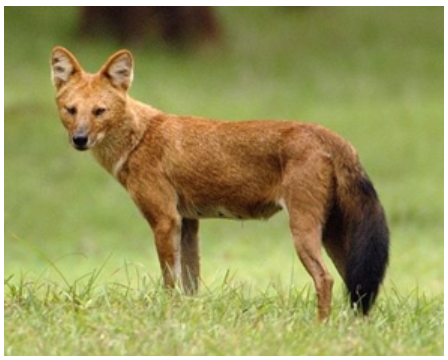
- Dhole (Cuon alpinus) is a wild carnivorous animal and is a member of the family Canidae and the class Mammalia.
- Dholes are highly social animals that lives in a clan of usually twelve individuals.
- Habitat:
- Historically, dholes purportedly occurred throughout southern Russia, all across central Asia, south Asia and southeast Asia.
- According to recent research and current distribution maps, they are restricted to south and southeast Asia, with the northernmost populations in China.
- In India, they are found in three clusters across India namely the Western and Eastern Ghats, central Indian landscape and North East India.
- Karnataka, Maharashtra and Madhya Pradesh rank high in the conservation of the endangered dhole in India, according to a study (2020).
- Dholes are animals that inhabit dense jungles, steppes, mountains, scrub forests, and pine forests.
- They vary in colour from charcoal grey to rust red to sandy beige, depending on their habitat.
- Ecological role:
- Dholes play an important role as apex predators in forest ecosystems.
- Conservation status:
- IUCN Red List: Endangered
- The Wildlife Protection Act 1972: Schedule II
- CITES: Appendix II
Arunachal Pradesh Gets GI Tags for Three Products
Why in news? Three indigenous products from Arunachal Pradesh – Yak Churpi, Khamti rice and Tangsa textile – have been granted the prestigious GI Tag by the GI Registry.
About:
Arunachal Yak Churpi:
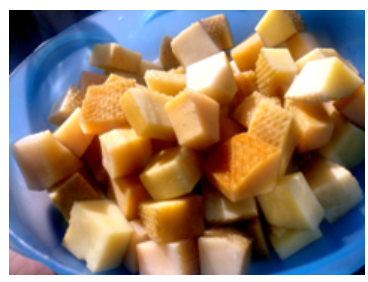
- Churpi is a cheese product prepared from the milk of Arunachali yak.
- Arunachali yak is a rare breed found primarily in the West Kameng and Tawang districts of Arunachal Pradesh.
- It is reared by tribal yak pastoralists known as Brokpas.
- It is widely consumed in the Himalayan region of India, Nepal and Bhutan.
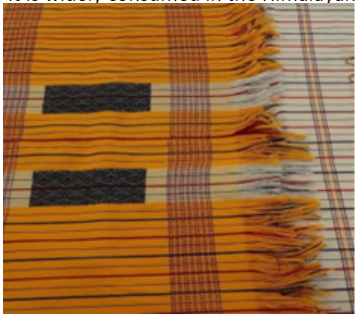
- Health Benefits and Usage: Churpi is rich in proteins and serves as a vital source of nutrition in the vegetation-scarce, cold, and hilly mountainous regions of Arunachal Pradesh.
Khaw Tai (Khamti Rice):
- Khaw Tai, a chewy sticky rice variety, hails from the Namsai region and is cultivated by traditional Khampti tribal farmers.
Tangsa Textile:
- Textile products of the Tangsa tribe of Changlang district are famous for their exotic designs and vibrant colors.
- This traditional craftsmanship reflects the cultural richness of the region.
|
GI Tag: |
|
Tele MANAS Seva - Edukemy Current Affairs
Why in news? The Tele-MANAS Seva, launched last year on the occasion of World Mental Health Day, has counselled more than 3,50,000 people till date.
About:
- Tele-MANAS Seva is a mental health counseling service launched on World Mental Health Day 2022.
- The aim of Tele-MANAS is to provide universal access to equitable, accessible, affordable and quality mental health care through 24X7 tele-mental health services as a digital component of the National Mental Health Programme (NMHP) across all Indian States and UTs with assured linkages.
- Nodal Ministry: Ministry for Health & Family Welfare.
- Coordinating Centre: National Institute of Mental Health and Neurosciences (NIMHANS).
- Key features:
- The Tele MANAS helpline offers toll-free access with audio calling and an auto-call back system.
- A toll-free, 24/7 helpline number (14416) has been set up across the country allowing callers to select the language (till now 20 languages) of choice for availing services.
- Provides basic support and counselling through centralised Interactive Voice Response system (IVRS) is being customised for use across all states and UTs.
- The Tele MANAS helpline offers toll-free access with audio calling and an auto-call back system.
- Will be organised in two tier systems:
- Tier 1 comprises state Tele-MANAS cells which include trained counsellors and mental health specialists.
- Tier 2 will comprise specialists at District Mental Health Programme (DMHP)/Medical College resources for physical consultation and/or e-Sanjeevani for audio visual consultation.
National Waterways 44 (Ichamati River)
Why in news? Recently, The Minister of State for Ports, Shipping and Waterways inaugurated the dredging work at National Waterways 44, Ichamati River in West Bengal.
About:
- Ichamati River is actually a transboundary river that flows through India and Bangladesh.
- It acts as a boundary between the two nations.
- The river is divided into three parts.
- The longer part flows from the Mathabhanga River, a distributary of the Padma, and after flowing for 208 km joins the Kalindi River near Hasnabad in North 24 Parganas and Debhata in Satkhira District.
- Additionally, Ichhamati River and its tributaries form a large oxbow lake complex in North 24-Paraganas district near Bangaon.
- However, the river faces challenges such as silt accumulation leading to reduced flow in dry seasons and flooding during the rainy season.
- National Waterways like Ichamati are essential for transportation, with India boasting 111 such inland waterways spanning a total of 14,500 kilometres.
- The Inland Waterways Authority of India (IWAI) oversees their development and regulation, facilitating the movement of around 55 million tonnes of cargo annually through Inland Water Transport (IWT).
Earthquake Strikes Northwestern Afghanistan
Why in news? Recently, an earthquake with a magnitude of 6.3 hit northwestern Afghanistan, causing widespread devastation.
About:

- Afghanistan is prone to earthquakes because it lies near the junction of the Eurasian and Indian tectonic plates, making it a seismically active region.
- Herat is one of the thirty-four provinces of Afghanistan, located in the northwestern part of the country. Together with Badghis, Farah, and Ghor provinces, it makes up the northwestern region of Afghanistan. It is primary city and administrative capital is Herat City.
Earthquake
- An earthquake is a sudden and violent shaking of the ground.
- These movements can result in the release of energy in the form of seismic waves, which propagate through the Earth, causing the ground to shake.
- The point on the Earth's surface directly above where the earthquake originates is called the epicenter, and the location within the Earth where the earthquake's energy is released is known as the hypocenter or focus.
- Smaller earthquakes that occur after a larger earthquake, as the Earth adjusts to the sudden movement.
India's Changing Stance on Israel-Palestine Issue
Exam View: History of India-Israel Relationships; Recent Shifts of India’s foreign policy; India's stand on the Israel-Palestine conflict
Context: India’s response to the Hamas attack in Israel has been unambiguous. India has condemned the terror attack and expressed solidarity with Israel moving away from its long held stance of neutrality.
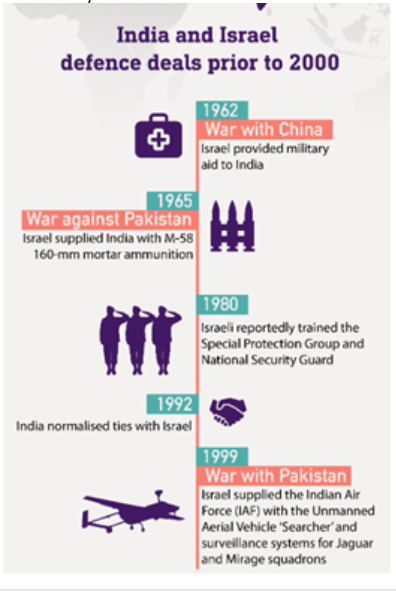
History of India-Israel Relationships:
- Post Independence Stance: India firmly backed the Palestinian cause, with leaders like Nehru and Gandhi advocating against religious exclusivism.
- In UN decisions, India opposed the division of Palestine and the entry of Israel into the UN. However, India acknowledged Israel in 1950, following Turkey and Iran's recognition.
- Strengthening Bonds with Palestine: Under Indira Gandhi's leadership, India remained steadfast in backing the Palestinian cause, endorsing the PLO as Palestine's only legitimate voice..
- Evolution of India-Israel Ties in the 1990s: India established full diplomatic ties with Israel in 1992, influenced by the end of the Cold War and BJP's ascendancy. The bilateral relationship further solidified in 1999 when Israel aided India during the Kargil conflict.
- Balancing Israel and West Asia: India’s foreign policy has adeptly managed India's relations with both Israel and Palestine, evidenced by separate visits in 2017 and 2018 respectively.
Recent Shifts of India’s foreign policy:
- Acknowledgement of India-Israel Relationship: India’s foreign policy shifted towards openly embracing India's ties with Israel, breaking from traditional hesitations.
- Realignment Towards Ground Realities: The current government recognizes that many Arab nations are forming relations with Israel without prior conditions. However India still officially backs the two-state solution for Israel-Palestine.
- Strengthening Ties with the Arab World: Despite earlier regimes claiming to support Arab causes, the current foreign policy has strengthened and modernised India's relations with major Arab nations, making UAE, Saudi Arabia, and Egypt key strategic allies.
- Abandonment of the Anti-Western Stand: The current government moved away from India's traditional resistance to the West's role in the Middle East, partnering with countries like the US, Israel, and UAE in new alliances and initiatives such as I2U2.
- Diplomacy Beyond Religion: A major shift has been the separation of India's regional diplomacy from religious considerations. While India has benefited from pragmatic ties with the Arab world, religious-based diplomacy has not been as beneficial for Pakistan.
India's stand on the Israel-Palestine conflict:

- Support for a Two-State Solution: India supports a negotiated solution leading to a sovereign, independent, viable, and united State of Palestine coexisting peacefully with Israel.
- Maintained Relations with Both Parties: India has diplomatic relations with both Israel and Palestine, which reflects its balanced approach to the Middle East conflict.
- Condemnation of Violence: India condemns all acts of violence, especially against civilians.
- Emphasis on Dialogue: India emphasizes the importance of dialogue for lasting peace and reconciliation.
- Historical Ties with Palestine: India has traditionally supported the Palestinian cause at international forums.
- Deepening Ties with Israel: Over the past couple of decades, India and Israel have cultivated strong bilateral relations, especially in areas of defence, agriculture, and technology.
- Call for immediate cessation of violence and de-escalation of the situation.
- Protection of civilians on both sides: India calls for safeguarding the rights of civilians on both sides of the border.
Share the article
Edukemy’s Current Affairs Quiz is published with multiple choice questions for UPSC exams
MCQ
Get Latest Updates on Offers, Event dates, and free Mentorship sessions.

Get in touch with our Expert Academic Counsellors 👋
FAQs
UPSC Daily Current Affairs focuses on learning current events on a daily basis. An aspirant needs to study regular and updated information about current events, news, and relevant topics that are important for UPSC aspirants. It covers national and international affairs, government policies, socio-economic issues, science and technology advancements, and more.
UPSC Daily Current Affairs provides aspirants with a concise and comprehensive overview of the latest happenings and developments across various fields. It helps aspirants stay updated with current affairs and provides them with valuable insights and analysis, which are essential for answering questions in the UPSC examinations. It enhances their knowledge, analytical skills, and ability to connect current affairs with the UPSC syllabus.
UPSC Daily Current Affairs covers a wide range of topics, including politics, economics, science and technology, environment, social issues, governance, international relations, and more. It offers news summaries, in-depth analyses, editorials, opinion pieces, and relevant study materials. It also provides practice questions and quizzes to help aspirants test their understanding of current affairs.
Edukemy's UPSC Daily Current Affairs can be accessed through:
- UPSC Daily Current Affairs can be accessed through Current Affairs tab at the top of the Main Page of Edukemy.
- Edukemy Mobile app: The Daily Current Affairs can also be access through Edukemy Mobile App.
- Social media: Follow Edukemy’s official social media accounts or pages that provide UPSC Daily Current Affairs updates, including Facebook, Twitter, or Telegram channels.

